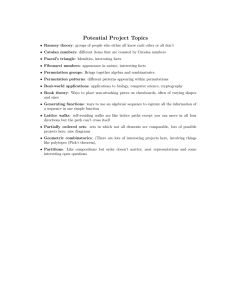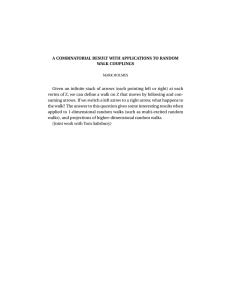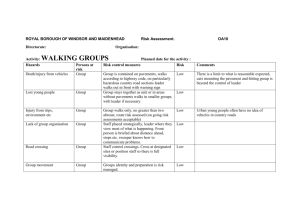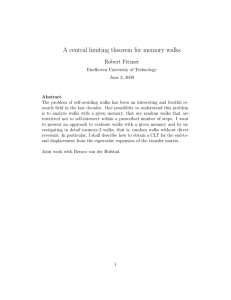70) STOCHASTIC MODELS Course Coordinator:Gabor Pete No. of
advertisement
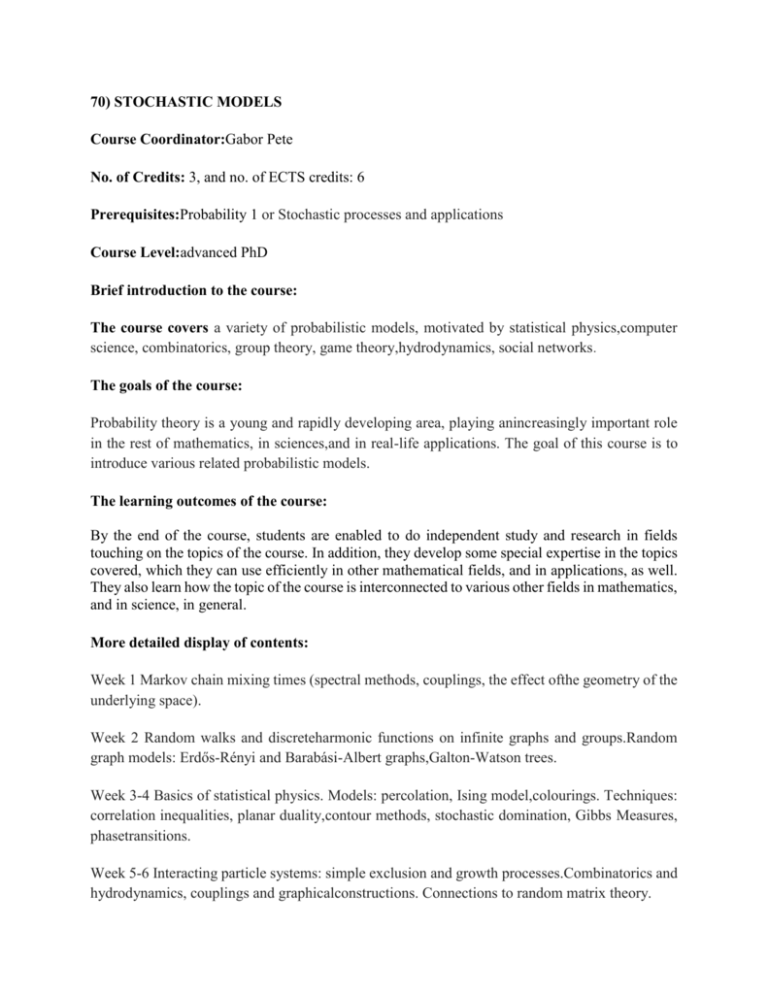
70) STOCHASTIC MODELS Course Coordinator:Gabor Pete No. of Credits: 3, and no. of ECTS credits: 6 Prerequisites:Probability 1 or Stochastic processes and applications Course Level:advanced PhD Brief introduction to the course: The course covers a variety of probabilistic models, motivated by statistical physics,computer science, combinatorics, group theory, game theory,hydrodynamics, social networks. The goals of the course: Probability theory is a young and rapidly developing area, playing anincreasingly important role in the rest of mathematics, in sciences,and in real-life applications. The goal of this course is to introduce various related probabilistic models. The learning outcomes of the course: By the end of the course, students are enabled to do independent study and research in fields touching on the topics of the course. In addition, they develop some special expertise in the topics covered, which they can use efficiently in other mathematical fields, and in applications, as well. They also learn how the topic of the course is interconnected to various other fields in mathematics, and in science, in general. More detailed display of contents: Week 1 Markov chain mixing times (spectral methods, couplings, the effect ofthe geometry of the underlying space). Week 2 Random walks and discreteharmonic functions on infinite graphs and groups.Random graph models: Erdős-Rényi and Barabási-Albert graphs,Galton-Watson trees. Week 3-4 Basics of statistical physics. Models: percolation, Ising model,colourings. Techniques: correlation inequalities, planar duality,contour methods, stochastic domination, Gibbs Measures, phasetransitions. Week 5-6 Interacting particle systems: simple exclusion and growth processes.Combinatorics and hydrodynamics, couplings and graphicalconstructions. Connections to random matrix theory. Week 7-8 Self-organized criticality in sandpile models. Week 9 Randomized games (tug-of-war, hex). Week 10-11 Variants of random walks: scenery reconstruction, self-avoiding andself-repelling walks, loop-erased walks, random walk in randomenvironment. Week 12 Queueing models and basic behavior; stationary distribution andreversibility, Burke's theorem. References: 1. R. Durrett: Probability. Theory and Examples. 4th edition, Cambridge University Press, 2010. 2. D. Williams: Probability with Martingales. Cambridge University Press, 1991. 3. W. Feller: An Introduction to Probability Theory and its Applications, Vol. II., Second edition. Wiley, New York , 1971.
